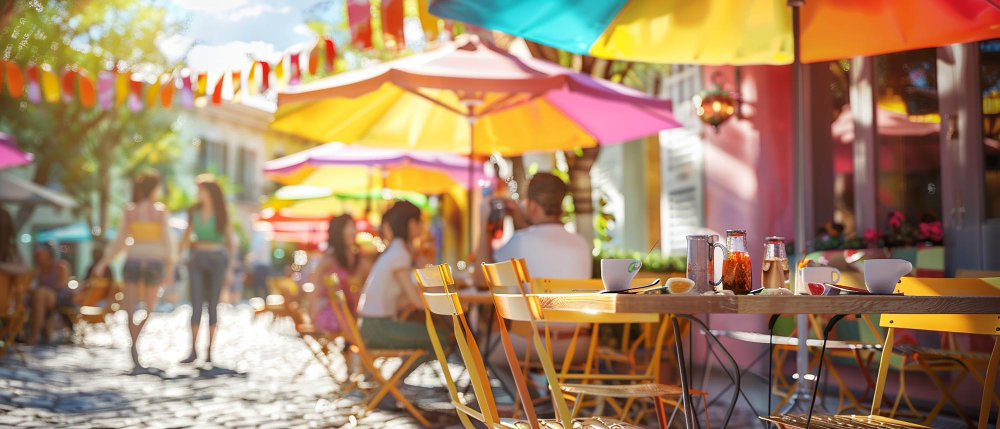
4 Underrated Rome Neighborhoods to Explore
Rome’s best-known districts like Trastevere and the Historic Center attract massive crowds, but there’s more to the Eternal City than its postcard neighborhoods. In this guide, we uncover 4 lesser-known areas of Rome that offer charm, character, and a budget-friendly experience. From artistic enclaves to food-lovers’ hubs, these neighborhoods deserve a spot on your Roman itinerary.
When to Visit Rome
The best time to explore Rome’s quieter districts is during the shoulder seasons: April to June and September to early November. The weather is pleasant, tourist crowds thin out, and accommodations are more affordable. Avoid peak summer months if you’re seeking a more relaxed experience.
Getting Around Rome
- Public Transit: Rome’s ATAC network covers buses, trams, and the metro. A 24-hour pass costs €7, or opt for a 72-hour pass at €18.
- Walking: Rome’s neighborhoods are walkable, and exploring on foot allows you to discover side streets and hidden gems.
- Use Google Maps or Moovit to navigate public transport and check real-time schedules.
1. San Lorenzo
San Lorenzo, nestled just east of Termini Station, is Rome’s student and artist enclave. Located near La Sapienza University, it pulses with energy and underground creativity. The neighborhood is served by buses and trams rather than the metro, but it’s easily reachable on foot from Termini.
San Lorenzo has a gritty charm, its streets filled with political murals, experimental art spaces, and small bookstores. Walk down Via dei Volsci and Via degli Ausoni for a feel of its rebellious spirit. For a quick bite, try Pinsa e Buoi or enjoy drinks with locals at Said, a former chocolate factory turned cozy lounge bar.
This neighborhood was heavily bombed in World War II, and its layered identity today still reflects that edge. It’s not polished—but that’s exactly its allure.
2. Testaccio
Testaccio, in Rome’s south near the Piramide Metro Station (Line B), is a working-class district with a rich food heritage and deep Roman roots. Once home to the city’s slaughterhouses, it transformed into a culinary and cultural haven.
Stroll along Via Galvani to discover traditional trattorias and contemporary street food at the lively Testaccio Market. Stop for a bite at Mordi & Vai—a sandwich stall beloved by locals—or grab an espresso at Bar Giolitti. Explore Monte Testaccio, an ancient hill built from broken amphorae (olive oil jars), and visit the serene Non-Catholic Cemetery, a tranquil oasis where poets Keats and Shelley are buried.
Testaccio feels lived-in, authentic, and Roman to its core—a fantastic blend of past and present, especially for foodies on a budget.
3. Pigneto
Located southeast of the center and served by the Malatesta Metro Station (Line C), Pigneto has become Rome’s bohemian hideout. Once gritty and overlooked, it’s now a hip, multicultural neighborhood with a soul.
Wander down Via del Pigneto, the district’s pedestrian heart, filled with indie cafés, vintage shops, and murals that splash the walls in color. Grab a spritz at Necci dal 1924, a café with a cinematic past—director Pier Paolo Pasolini was a regular. At night, the area comes alive with creative bars and street-side aperitivo spots where drinks and snacks come at low prices.
Pigneto still carries its edge, but with a youthful and experimental energy that makes it ideal for travelers seeking a less touristy Rome.
4. Garbatella
To the south of the Aventine Hill and reachable by the Garbatella Metro Station (Line B), Garbatella offers a romantic vision of Rome that feels more like a small town. Founded in the 1920s as a garden suburb, it’s famous for its pastel-toned buildings, green courtyards, and stair-stepped walkways.
Stroll through Piazza Benedetto Brin and explore the cozy streets of Via Passino and Via delle Sette Chiese. Grab a sandwich from Lo Zozzone or enjoy a coffee in the quiet square as kids play nearby. Garbatella is also home to Teatro Palladium, which hosts affordable plays, concerts, and film nights.
The neighborhood offers a slower, nostalgic Rome that’s perfect for catching your breath—and capturing Instagram-worthy corners around every turn.
General Tips for Exploring Local Rome
- Stay in lesser-known districts for better rates and more authentic experiences.
- Use refillable bottles: Rome has plenty of clean public fountains (nasoni).
- Eat where locals eat: Look for handwritten menus and spots off the main roads.
- Attend free cultural events: Check Facebook and local listings for neighborhood festivals.
- Use grocery stores for snacks, water, and picnic items.
Final Thoughts
Rome’s underrated neighborhoods are where the city truly reveals its everyday beauty. Whether it’s the student buzz of San Lorenzo or the quiet elegance of Garbatella, these districts let you enjoy Rome on your own terms—and often, at a fraction of the cost. Step off the well-trodden path and discover the city through a local lens.
